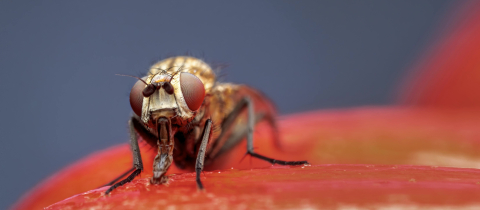Black, white, and orange – the signature colours of a calico cat. Subtract the white and you’ve got tortoise shell colouring. But there is gender colour discrimination at play: calico and tortoise shell patterns only occur in female felines.
Today we’re talking genetics, which can get complicated. So, before we dive in, here’s a simplified lesson. Each organism has a certain number of chromosomes, with each chromosome consisting of a single strand of DNA wrapped around proteins. DNA is a molecule that is often referred to as the “blueprint of life” because it contains all our genetic information. These chromosomes are where our genes are located. Chromosomes come in pairs: you receive one from your mother and one from your father. Cats are no different.
There are two chromosomes that determine sex: the X and Y chromosomes. If an individual has two X chromosomes, their sex is said to be female . If they have one X and one Y, they are said to be male. When it comes to cats, the gene for fur colour happens to be located on the X chromosome.
Given that the Y chromosome is so much smaller than the X, there is a potential here for a gene dosage problem. Genes code for proteins. A female has two long X chromosomes, whereas a male has one long X chromosome and one tiny, atrophied Y chromosome. If a female has twice as many copies of the genes on her sex chromosomes as a male, she will make twice as many proteins from those chromosomes, which from a biological standpoint might cause problems. Nature’s solution? To partially silence one of these X chromosomes in females. And this takes us back to those cats with two- or three-coloured coats.
The different colourings in a calico or tortoise shell are due to a different chromosome being inactivated in different parts of their body. These two cat breeds have the black fur version of the gene on one X chromosome and the orange version on the other. So, a cat’s ears might be black because the X chromosome containing the orange trait is silenced there, and her tail may be orange from the opposite effect.
This process of silencing one X chromosome is sometimes called Lyonization, after English geneticist Mary Lyon who discovered it, and it occurs very early in the development process. Once a cell determines which X chromosome gets silenced, it makes a copy of itself through replication. This means that all of the cells in the same area of the body will code for the same fur colour, which is why the colours get expressed in patches.
The white fur colour in calicos is due to a condition called piebaldism, whereby patches of fur are unpigmented from a mutation causing a lack of melanocytes – pigment producing cells. Tortoise shells simply don’t have this condition. But we see a lot of calico cats (and other spotted breeds) due to selective breeding.
Bottom line: that’s why these cats are almost always female, because they need to have two X chromosomes. But there are some exceptions. For a male to be a calico or tortoise shell, he must have three sex chromosomes (two Xs and one Y), a condition which is called Klinefelter syndrome. However, they tend not to live as long due to complications that arise from the extra sex chromosome. These boys are quite rare – one in 3,000. But we try not to play favourites -- be sure to give them all lots of cuddles!
Haleh Cohn just finished her first year at McGill University and is interested in the health sciences.







